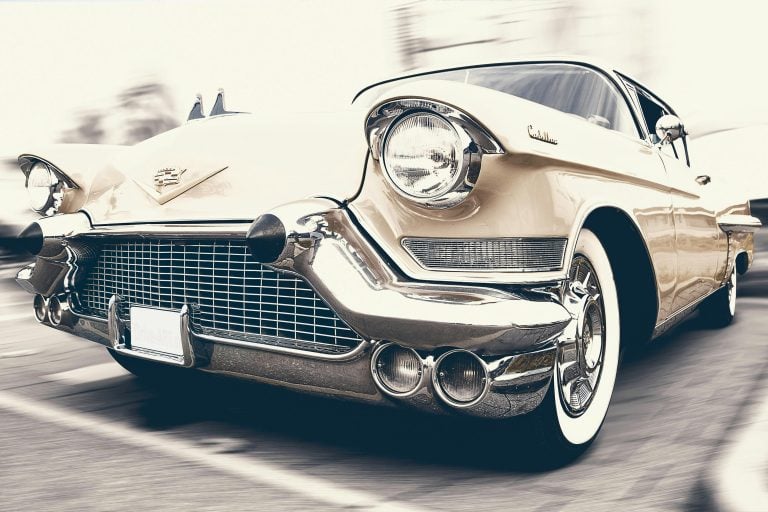The Cadillac El Dorado was a luxury car manufactured and marketed by the Cadillac Motor Car Division of General Motors from 1952 until 2002, over twelve generations. The El Dorado was at or near the top of the Cadillac product line the entire time. The original 1953 Cadillac El Dorado convertible and the El Dorado Brougham models of 1957–1960 were the most expensive models offered by Cadillac during those years. The El Dorado was never less than second in price after the Cadillac Series 75 limousine until 1966. The Cadillac El Dorado was branded with the Fleetwood designation from 1965 through 1972. The cars were very expensive. Were you fortunate enough to own one?
12 Generations of the Cadillac El Dorado

The Cadillac El Dorado was one of the classiest cars in American history, and it was priced accordingly. There were 12 generations. The Cadillac Series 62 El Dorado joined the Oldsmobile 98 Fiesta and Buick Roadmaster Skylark as top-of-the-line, limited-production specialty convertibles introduced in 1953 by General Motors to promote its design leadership.
In 1954, the Cadillac El Dorado lost its unique sheetmetal in an effort by General Motors to lower its price. Now it shared its body shell with standard Cadillacs. The side panels were made of extruded aluminum and also appeared on a one-of-a-kind El Dorado coupé built for the Reynolds Aluminum Corporation. Also included in the production Eldorado convertible were monogram plates on the doors, wire wheels, and custom interior trimmings with the Cadillac crest embossed on the seat bolsters.
1957 saw the Cadillac El Dorado (in both Biarritz convertible and Seville hardtop body styles) receive new styling with a rear-end design featuring a low, downswept fenderline capped by pointed in-board fins. Just behind the open rear wheel housings, the lower rear quarters were trimmed with broad, sculptured stainless steel beauty panels that visually blended into the split rear wraparound bumper assemblies. A form of this unique rear-end treatment first appeared, without fins, on the Cadillac “Interceptor” prototype from the late 1940s.
Along with the rest of the General Motors divisions, the bulky, originally proposed 1959 styling was abandoned in favor of a significantly lower, longer, and wider theme as an overdue response to Virgil Exner’s striking redesign of the 1957 Chrysler products. The 1959 Cadillac El Dorado is remembered for its huge tailfins with dual bullet tail lights, two distinctive rooflines and roof pillar configurations, new jewel-like grille patterns, and matching deck lid beauty panels.
The fifth-generation Cadillac El Dorado was produced for model years 1959 and 1960; the Eldorado Brougham became longer, lower, and wider. The Brougham featured narrow taillights integrated into low tailfins; an angular rear roofline with rear ventiplanes that contrasted with the rounded roofline; and the dual rocket-like taillights and tall fins of the standard 1959 models. Front and rear bumper assemblies were shared with the standard Cadillacs.
All Cadillacs were restyled and re-engineered for 1961, the sixth-generation Cadillac El Dorado. An Eldorado convertible would remain in the Cadillac line through 1966, but its differences from the rest of the line would be generally more modest. The new convex jewelled grille slanted back towards both the bumper and the hood lip, along the horizontal plane, and sat between dual headlamps. New rear-slanting front pillars with a reverse-curved base, as first used on the 1959-60 Broughams, with a somewhat less expansive windshield, were incorporated.
For 1965, the Cadillac El Dorado gained Cadillac’s Fleetwood designation, marketed as the Fleetwood Eldorado, similarly to the Fleetwood Series 75 and the Fleetwood Sixty Special. The Biarritz nomenclature was finally dropped from sales literature, probably because there was no need to distinguish the convertible from the long-defunct Seville and Brougham (The Biarritz nameplate would be revived in 1976 as a trim option for the Eldorado coupe). This was the last generation Eldorado to be equipped with Rear Wheel Drive.
The eighth generation of the El Dorado featured a radically redesigned model for 1967 as a front-wheel drive hardtop coupe, becoming Cadillac’s entry in the era’s burgeoning personal luxury car market. Promoted as a “personal” Cadillac, it shared the E-body with the second-generation Buick Riviera and the first-generation Oldsmobile Toronado, which had been introduced the previous year.
The ninth-generation Cadillac El Dorado, introduced for 1971, was substantially redesigned, growing two inches in length, six inches in wheelbase, and featuring standard fender skirts, all of which gave the car a much heavier appearance than the previous generation. The 500 cu in (8.2 L) V8 engine remained an El Dorado exclusive. This 126.3-inch (3,208 mm) wheelbase would run through 1978, with major facelifts for 1973, 1974, and 1975. A record 27,368 Eldorados were sold during the 1971 model year.
The tenth-generation Cadillac El Dorado debuted in 1979, continuing to share the same platform with the Buick Riviera and Oldsmobile Toronado. This model was successful in terms of annual production totals compared with the ninth and eleventh generations.[61] The model set an all-time Eldorado sales record in 1984 of 77,806 (coupes and convertibles), accounting for about 26% of all Cadillacs sold.
As a key factor influencing the design of the 11th-generation Cadillac El Dorado, General Motors relied on a consultant’s prediction that gasoline would rise sharply in price by 1986. Concluding that smaller luxury cars would be in demand, General Motors downsized its full-sized cars for the second time for the model year 1985; higher fuel prices did not materialize, however.
The twelfth and final generation Cadillac El Dorado introduced for 1992 was 11 inches (279 mm) longer and 3 inches (76 mm) wider than the previous generation, featuring frameless window glass. Marketed in either the El Dorado Sport Coupe or the El Dorado Touring Coupe trim, the former featured a stand-up hood ornament, Cadillac crests on the rear roof pillar, 16-inch multi-spoke alloy wheels, and concealed exhausts.
Conclusion
The El Dorado was one of the most expensive cars in American history. Its luxury price puts many people out of the market for it. The large size was iconic, but the big car was a gas guzzler that was ill-suited for the era of increasing energy scarcity. Nevertheless, the car stayed in production for fifty years and had a loyal fanbase.







